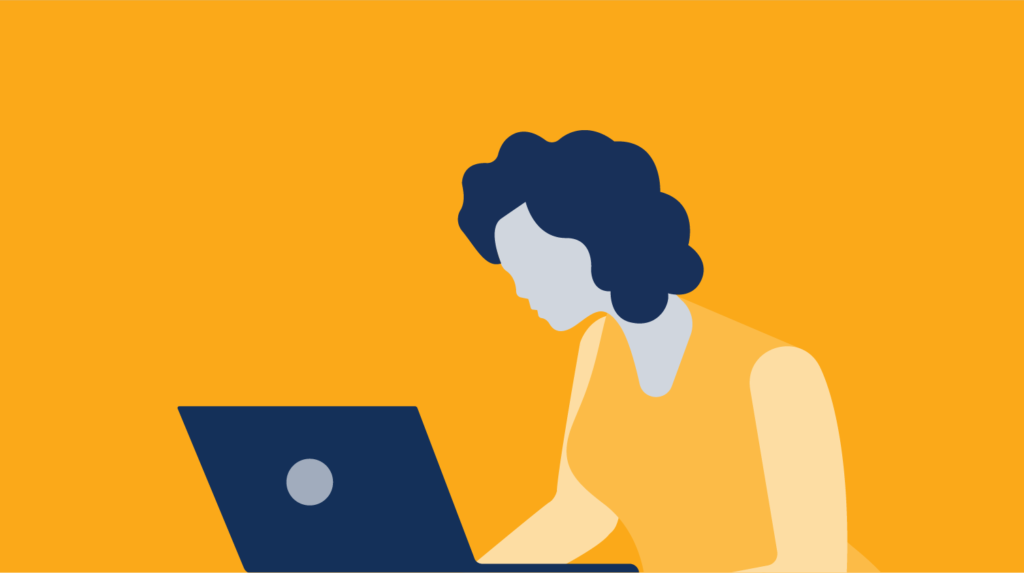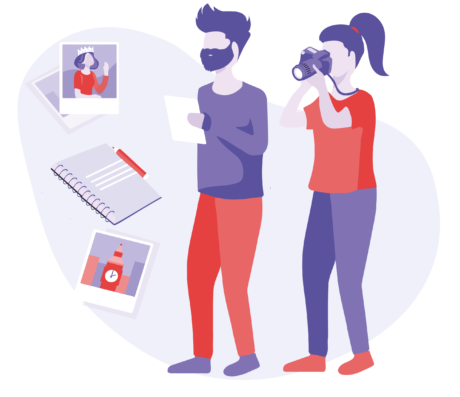UI UX Training Overview

Attend UX UI Training by Real-Time Expert with Real-Time Scenario’s and from the basics to Understanding, Creating a different Websites using UI UX Skills.User Experience usually called as UX, mainly focusing on how user engaging with Product ( Website, Apps..etc ), That is to simple to understanding, Use etc.User Experience designing is the process of development and improvement of quality interaction between the user and product. User Experience deals with the research, testing, development, and content to develop Quality Interaction between the User and Products.User interface usually called as a UI design or User interface Engineering is the design of websites, Computer, Appliances, mobile communication devices and apps mainly focusing on user experience and interaction
Introduction to UI / UX
- Roles of UI Developer
- Roles of UI Designer
- Difference between UI Developer & UI Designer
- Technologies required for UI Development
Tools Used for UI / UX
- Notepad++, Atom, Sublime Text, Brackets
- Visual Studio Code, WebStorm IDE
- Live Server using npm
- All tools installation and usage
Introduction to HTML 5
- How it works
- Structure of an HTML Doc
- HTML First Application
- Rules of HTML coding
- Header Tags, Paragraph tag
- DIV tag, Span Tag, Text Formatting
- Unordered List, Ordered List
- Images, Tables, Links, HTML Entities, Iframes
- Mini Project (The Great India Website)
Forms in HTML 5
- Introduction, Form Elements
- Input Types, Attributes
- Mini Project (Online Job Application)
Semantic Elements in HTML 5
- Introduction
- <Section>, <Article>, <Header> <Footer>
- <Aside>, <nav>, <figure>, <figcaption>
- <Details>, <Summary>, <time>, <main>
- Mini Project (Company Website)
Introduction to CSS3
- Introduction,
- CSS Selectors, CSS Pseudo classes selection
- Inline CSS, Internal CSS, External CSS
- Div, Id, Classes, Colors, Borders
- Margins, Paddings, Text-formatting
- Fonts, Lists, Styling Links, Tables, Box Model
- Display, Position, Float, Align, Pseudo Elements
- Navbars, Tooltips, Forms, Opacity, Image Gallery
2D Transforms in CSS 3
- Introduction
- translate(), rotate(), scale(), skewX(), skewY()
- skew(), matrix()
3D Transforms in CSS 3
- Introduction
- RotateX, RotateY, RotateZ
Buttons in CSS3
- Basic Button Styling, Buttons Colors, Button Sizes,
- Rounded Buttons, Hover able Buttons
- Shadow Buttons, Disabled Buttons
- Button Groups, Animated Buttons
- Mini Project (Technology Portal Website)
Basic JavaScript
- Introduction to JavaScript
- JavaScript features
- Understanding Runtime Env
- Why to Learn JavaScript
- Interesting Facts of JS
- History of JavaScript
- Setting up Development Env
- JavaScript Basics
- Inline JavaScript
- Internal JavaScript
- External JavaScript
- Variable Declaration in JS
- JS Data Types and Operators
- JS Conditional Statements
- JS Objects, Arrays and Functions
- JS Math & Date Objects
- JS DOM Manipulation

Advanced JavaScript
- JS Scopes Concepts
- JS Advanced functions
- JS Closures
- JS Objects advanced
- JS Prototypes
- JS Objects Inheritance
- Mini Project (Typing Speed Tester App)
jQuery
- Introduction
- JQuery selectors, Events, and Effects
- JQuery with HTML
ECMA Script 6 Features
- Default Parameters
- Template Strings
- Let & Const
- For….of loops
- Lambdas
- Destructing
- The Spread Operator
- Computed Properties
TypeScript Development
- Introduction to TypeScript
- TypeScript Overview
- Differences between JavaScript and TypeScript
- TypeScript Editors
- Installing TypeScript
- Project Setup in TypeScript
- TypeScript Hello World
- TS Data Types, Enums and Functions
- TS Default Arguments and Optional Arguments
- TS Function Overloading
- TS Interfaces, Classes, Constructors and Methods
- TS Getters & Setters
- TS Lambda Expressions
Bootstrap 4 Development
- Introduction
- What is Bootstrap?
- Features of Bootstrap
- History of Bootstrap
- Bootstrap Overview and Installation
- Tools Used for Web Development
- Setting Development Environment
- Bootstrap First Application and Components Overview
- Basic Typography
- Text Alignment & Display
- Floats Position in Bootstrap
- Colors Background
- Spacing in Bootstrap
- Sizing in Bootstrap
- Breakpoints in Bootstrap
- Buttons in Bootstrap
- Navbars in Bootstrap
- List groups and Badges in Bootstrap
- Forms in Bootstrap
- Input groups in Bootstrap
- Alerts & Progress bars in Bootstrap
- Tables & Pagination in Bootstrap
- Cards in Bootstrap
- Media Objects
- Grid System in Bootstrap and Alignments in Bootstrap
- Flex boxes in Bootstrap
- Auto margin & wrapping order in
- Carousels in bootstrap
- Collapse classes in Bootstrap
- Tooltips in Bootstrap
- Popovers in Bootstrap
- Modals in bootstrap
Introduction to Angular JS
- Introduction
- What is Single Page Application?
- Declarative vs Imperative Programming
- How Angular Application Works
- First Angular JS Application
- Angular Directives, Controllers and Modules
- Dependency Injection
- Two way Data binding
- Examples of Two way Data binding
- Mini Project (Simple Angular JS App + Bootstrap 4)
- Major Real Time Projects & live Coding

The UI/UX Design Specialization brings a design-centric approach to user interface and user experience design, and offers practical, skill-based instruction centered around a visual communications perspective, rather than on one focused on marketing or programming alone. In this sequence of four courses, you will summarize and demonstrate all stages of the UI/UX development process, from user research to defining a project’s strategy, scope, and information architecture, to developing sitemaps and wireframes. You’ll learn current best practices and conventions in UX design and apply them to create effective and compelling screen-based experiences for websites or apps.
User interface and user experience design is a high-demand field, but the skills and knowledge you will learn in this Specialization are applicable to a wide variety of careers, from marketing to web design to human-computer interaction.
Learners enrolled in the UI/UX Design Specialization are eligible for an extended free trial (1 month) of a full product suite of UX tools from Optimal Workshop. Details are available in Course 3 of the Specialization, Web Design: Strategy and Information Architecture.
Lately, quite often many people asked me the same questions:
What advice can I give to someone who wants to take the same route, like me, and what do I recommend to watch, read, listen and learn?
Did I take any course and if so, how did they help me?
What skills are required in companies like Wargaming, etc.
What role did the portfolio play? What type of work dominated in it?
Where to find a job (if there is no degree or work experience)?
So I decided to devote a whole post to this subject, and to describe how I started working as a designer and how, after going all this way, I advise others to start their career in the design field.
How did I start?
I worked with such companies as Montblanc, Dunhill, Saks Fifth Avenue and many others as a graphic designer. I have about 10 years of experience in the design field. After 7 years of work as a graphic designer, I decided to switch to web design; I’m just talking about the web, because at that time there were no such divisions as UX, UI and others. (The reason for this change was the interest in a new design direction, greater freedom of ideas expression and no matter how typical it sounds the greater demand on the market and greater long term opportunities).

I just want to let you know right away that just like many of you now, who are reading this article, I had no experience in web and mobile design. The only advantage I had was that I more or less knew the photoshop. I did not have the appropriate portfolio and experience.
And further you can read how I did all this, step by step, and what algorithm of action I would follow if I were you:
- Understand all the design directions
First of all the most important thing for you now is understanding of what exactly you want to do. Many people write to me: “I want to draw illustrations” and the person himself does not know what kind of illustrations? Cartoons or icons or animations? You have to choose for yourself what do you want. No one will do it better than you. - Study the tools for work
I think that further explanation is not necessary. How can you succeed if you have not mastered the program you need yet? You are lucky if you are a beginner, then you will not have to switch from Adobe Photoshop and Illustrator, you can go directly to Sketch or Figma. Read about their differences and think about what you need to learn. A tip from me, if you have already chosen the design direction you want to follow, do not be lazy check out Headhunter, Linkedin or any other work finding platform and see what employers are looking for, what programs you should know and go from there. - Start paying attention to design
Before becoming a web designer, I completely ignored the structure and the content of sites and mobile applications, I did not see the colors and fonts used, I did not notice the components. If you decide to become an interface designer, start paying attention to everything and ask yourself the following questions: why did they put the logo here, and not there? And why a certain button is at the end, and not in the beginning? Learn what the site usually consists of? (I’m talking about simple things such as header, body and footer). Asking yourself questions and answering them, scrolling through the options in your head, you will start not only using the website, but evaluating it from a professional point of view. - Surround yourself with design
My advice to you is to dive completely into design, start looking at other people’s work every day. There are millions of resources, below are the ones I use:
Behance portfolio platform
Dribbble portfolio platform
Awwwards platform-awarded the title of the best in web design
This practice of viewing other people’s works and portfolios will help you enter the design track, see what others are doing (also in good projects there are job descriptions and decision making descriptions), you will become aware of fashion trends, and will get some inspiration. - Watch and Copy Others
I am often being asked how to start working as web designer, if you do not have a work experience and a degree. Start stupidly repeating and copying other people’s work, the sites that you liked. Just sit down, choose a site and copy the entire website. I do not advise you to use someone else’s work in your portfolio, no! I give you this advice so you can get some experience and at least start the process somehow! Look at it as a lesson. I took an art history class in my art school, where we studied different art directions and different artists, and even had classes on copying paintings and styles, because without trying someone else’s, you will not find your own. - Find mentors and become mentors
The professionals have very little free time, especially for beginners. Therefore, I do not advise you to find yourself a victim and bother that person to teach you design. I honestly have never met a person, who is just ready to help you to build your career. It takes a lot of time, effort and nerves. I’m talking about mentors, those designers who share their experiences in blogs, in vlogs, in social networks. Subscribe to the top designers you like, watch what they read, what conferences they go to, what new programs they study, so without much effort you will be aware of all the popular design events and novelties.
If you are a beginner, you can still become a mentor yourself. For example, you can start writing your own blog about your first steps in the design industry. Or you can talk to your friend about interesting things you learned or found. Repeating and talking to someone about your newly acquired knowledge will help you to deeper understand the subject and remember the material better. - Take course
Many people ask the question if the courses are really necessary. Everyone is different, some people are more interested in and more comfortable with digging into the new profession at home, watching YouTube videos, reading books and articles. Others need a design environment and atmosphere. If you are the second type, plus you have some financial freedom and time to pass the courses, then I will say yes! Take the course! — they will help. Just make sure you make the right choice, view the comments and reviews, and see how popular the school is. Below is the list of schools that I heard about recently (I did not take these course myself
Why choose us Coding Training
1. Having More Than 15 Years Of Experience In Medical Coding Training
2. 13+ Years Of Experience In Real-Time Industry
3. 100% Lab Facility For Every Student By Experienced Lab Coordinators
4. Training On Live Projects And Assignments
5. 100% Placement Assistance
6. Lifetime Access To Latest Content
7. 24 X 7 Trainer’s Support On Online Forum
8. Giving Credits For Real Time Internship
9. Get Full Access To Paid SEO Tools
10. Become A Certified Professional
How much Does Medical Coding Training And CPC Fees Hyderabad
Fees for Medical Coding 6,000+ only if ur Looking for All training in Hyderabad 12,000+ Classroom training and internship training with live projects.
![]() S Nandini reddy
S Nandini reddy
★★★★★ 1 days ago
Best institute from recent times to learn CPC with live projects
Reply Like
![]() Haritha
Haritha
★★★★★ 1 days ago
Best online CPC Certification training in Hyderabad, Online Medical coding training in Hyderabad with live projects
Reply Like
![]() Javeed
Javeed
★★★★★ 1 days ago
good institute for Medical coding training in Hyderabad
Reply Like
![]() Rahul Rad
Rahul Rad
★★★★★ 1 day ago
Best institute Medical coding training in Hyderabad
Reply Like
